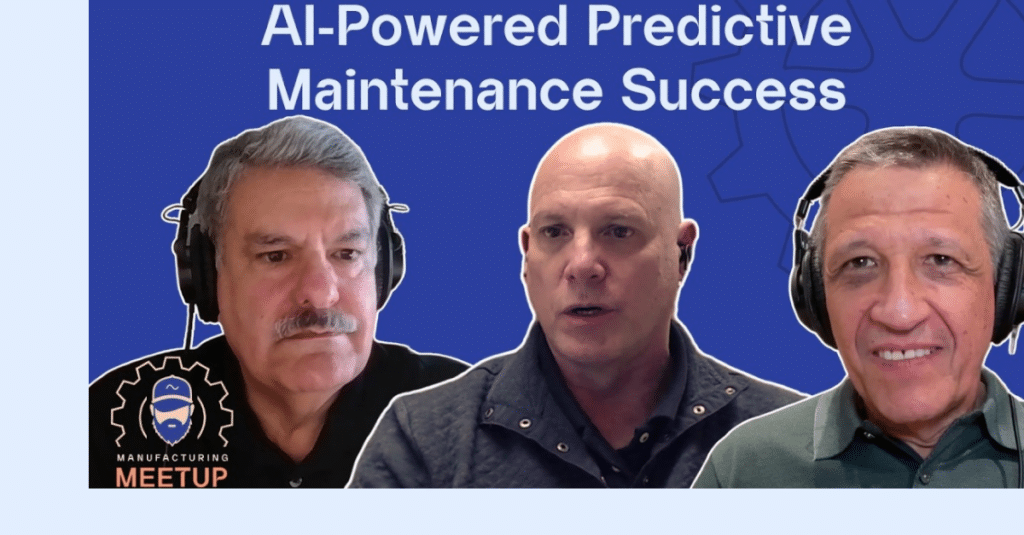
Our course ‘Vibration Analysis 101: Waveforms, Spectrums, and Diagnostic Basics’ was very popular and participants posted many questions. Here are some we thought were worth sharing – from resource tips to resonance and beyond.

Our course, ‘Vibration Analysis 101: Waveforms, Spectrums, and Diagnostic Basics’, opened a whole series that provides a technical deep dive into everything you need to know to apply vibration analysis to your CBM program.
Hosted by Augury’s own Nat Mills (Solutions Architect Manager) and myself, Andrew Pry (Solutions Architect), the series offers invaluable insights for those who are – or want to be – responsible for the health and performance of their facility’s machines.
This first installment started with the basics: the pros and cons of route based and online monitoring, how time waveforms turn into data that can diagnose common machine faults, and the knowledge you need to start your own vibration journey. While we dealt with some questions during the webinar itself, there were many quality questions left unanswered.
So let’s deal with them here!
Is there a handy resource that collects most of the common faults you can detect as a VA?
You are only a Google search away from finding what vibration frequencies typically look like for specific faults. You can purchase books, posters, and pamphlets from a vibration training company. There’s no one source-of-truth textbook that stands out. Every training company makes its own textbook, and all are slightly different in how the information is presented, but they mostly show the same vibration frequencies for each fault type. Often, you can buy these without taking the courses for a few hundred dollars – though you might have to go, for instance, to the Mobius Institute, as far as the checkout cart to cancel the certification course itself. The Technical Associates Of Charlotte also has a real nice looking wall chart – but yes, there’s a price tag.
What is the minimum frequency/RPM that you believe vibration analysis is still an effective form of monitoring?
Like criticality, this is a machine-by-machine decision. There are a lot of gray areas. And while our confidence in detecting faults decreases at very low speeds, it also depends on the fault type that is developing and the specific machine geometry. If you want to know more about a specific machine, please contact Augury and we can help assess if that machine is a fit for your program. I should add, however, our list of applicable machines keeps expanding.
When is it important to know the natural frequency of a rotating assembly?
When the natural frequency could possibly have frequencies that overlap with known frequencies on the machine, you should study the natural frequencies to check for resonance. And you’re not going to know when it’s a problem until you do the resonance analysis. You can’t look it up on a database with the model number of your pump to find its resonance frequency. It doesn’t work like that. There are so many variables that can play into it – even things as minor as the bearing clearances or auxiliary attachments/piping. Even a slight design change can have a massive impact on your resonance.
Resonance becomes a problem whenever your operating frequencies start to overlap with natural frequencies – which is in fact the definition of resonance. So it’s those two elements you need to check. Resonance is in fact an ongoing conversation in Augury’s customer community The Endpoint – sign up to keep learning more!
How do we normally identify resonance faults? Is machine amplification the better way of troubleshooting it?
You can identify resonance faults by analyzing the structural natural frequency by modal impact analysis (aka bump test). You can also look for evidence of resonance by doing what’s called a “run up” or “run down” test, which operates a machine at all the ranges of frequencies and compares those running speeds to the vibration amplitudes. At Augury, we gather a bunch of different operating time stamps with a bunch of different frequencies, and basically recreate the “run up” or “run down” test with our large data set. Check out the article on Resonance in The Endpoint to see what this looks like.
Motion Amplification is good for understanding where on the structure your resonance lies, and also what bending mode. It is a different analysis tool altogether, but also can be helpful in fixing resonance.
Besides mechanically-induced vibrations, can you create vibrations from the electrical power source or due to miswiring of the motor?
Yes, The electrical signal in a motor can actually produce a mechanical vibration. But not all electrical faults can be detected with vibration monitoring alone. However, sometimes these faults can produce signals that might indicate a problem. The best way to catch an electrical fault is with motor current signature analysis, and monitoring the actual currents, voltages, power factors, etcetera – all the power details involved with the motor themselves from the motor control circuit. That is the best way to catch motor electrical faults. Mobius has a great video describing this phenomenon around how a motor’s electrical current can create mechanical vibration. I’d just begin by watching that.
Watch ‘Vibration Analysis 101: Waveforms, Spectrums, and Diagnostic Basics’.
You can also continue the conversation on our community The Endpoint to learn more and ask questions directly



